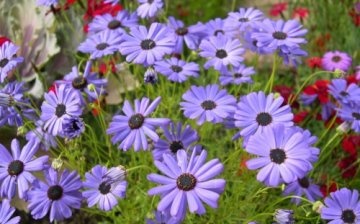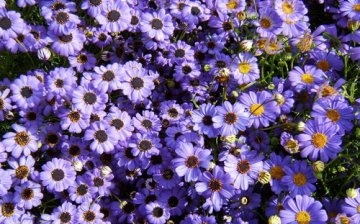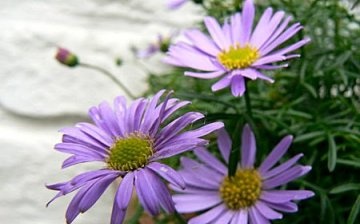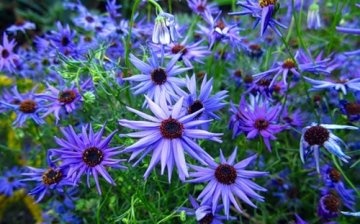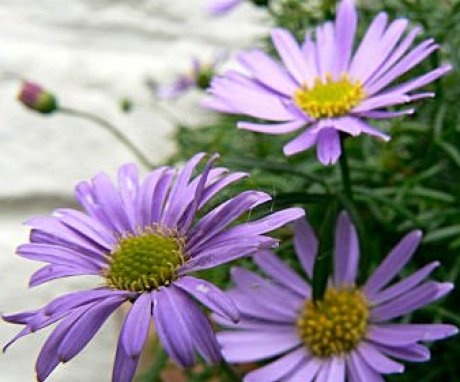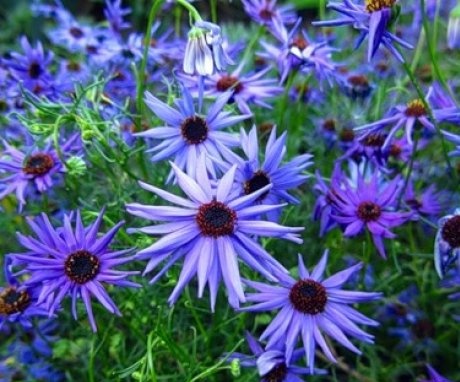Brachikoma in the photo is an undeservedly forgotten beauty
Seeing this floral plant, you might think that the hand of some unknown artist painted chamomile or daisy in lilac-violet-blue color. Of course, this only happens in fairy tales. In fact, in front of us is a brachycoma in the photo.
Content:
- Botanical description
- Origin
- Choosing a landing site
- Reproduction of a garden beauty
- Planting a brachicoma
- Brachicoma care
- Top dressing
- Diseases and pests
Botanical description
This plant is undeservedly bypassed by the attention of flower growers, few have heard of this worthy representative of the flora. Yes, brachycoma does not look like an exotic flower, but it is not devoid of that elegant simplicity that fascinates.
Brachycoma (Brachycome Cass) belongs to the Aster family, or Compositae. In its home country, the plant is a perennial. In our country, it grows like an annual.
With its short stature (15-25 centimeters), the brachicoma has grace and grace.
The bushes of the plant are fluffy and, despite the small, but bright flowers that form a basket inflorescence, they look touching and cute. The plant blooms from mid-summer to early autumn. The peculiarity of the plant is that it blooms not only in sunny weather, but also in cloudy weather.
Brachikoma is able to decorate any corner of the garden, be it the edge of a flower bed, a border, alpine slide, balcony. Brachycoma looks very good surrounded by larger flowers: rudbeckia, Gaillardia, Ursinia or coreopsis... It goes well with ampelous plants. Brachicoma looks beautiful in single plantings.
Origin
Brachikoma came to us from Australia. She has a Greek name, which comes from two words: "brachys" - short and "come" - hairs. The plant got this name because of the "forelock" present on the seeds. He has another name - blue daisy. This is what the inhabitants of Australia and Germany call the brachycene.
Choosing a landing site
When choosing a place for planting, give preference to sunny open areas or light partial shade. The place must be protected from strong winds.
Reproduction of a garden beauty
The plant propagates with the help of seeds, cuttings and seedlings.
The advantage of brachicoma is that after flowering and mass formation of seeds, it willingly reproduces by self-sowing, so that next year it will again delight its owners with clouds of flowers.
If you do not have this flower yet, and you decide to grow it from seeds, then pay attention to the fact that it is better to use purchased seeds, and not collected yourself.
The seeds of the brachicoma are very small. They are sifted over the surface of the compost and watered with a weak solution of potassium permanganate. The ideal temperature for their germination is + 18-20 degrees.
But despite their small size, the seeds are characterized by increased vitality. Seedlings appear together 3-5 days after sowing. They are watered with a spray bottle due to their small size. When the sprouts rise a little, they are seated.
If you do not want to dive, then use peat bags or cassettes for sowing seeds.
Young plants should be hardened before planting. When planted in soil, they are not afraid of frost and are able to withstand 5 degrees of frost.
Planting a brachicoma
The plant loves air and permeable light soil mixtures, best of all sandy. It is advisable to prepare drainage.It is also recommended to loosen the soil around the plant more often.
Brachykoma is planted at a distance of about 20 centimeters.
Brachicoma care
Brachycoma is characterized by unpretentiousness. It is the perfect choice for beginners and lazy growers alike.
The plant is characterized by frost and drought resistance. But it is still recommended to periodically water the brachycene. But do not overdo it: excess moisture can kill it.
To improve the branching of bushes and obtain a spherical shape, as well as for a more luxuriant flowering of the top of the brachycoma shoots pinch.
Damaged and faded branches should be removed regularly.
Top dressing
Fertilizing with fresh manure is not worth it, this has a detrimental effect on the growth and development of plants. It is better not to feed the brachycoma with organic fertilizers at all, it will be more grateful to fertilizing with mineral and wood ash.
To fertilize the soil, it is best to use a mixture of humus, coarse river sand, leaf and sod land in a ratio of 2: 1: 1: 3. To the resulting mixture (1 bucket) add 1 tablespoon of complete mineral fertilizer (ratio of nitrogen, phosphorus and potassium 1: 1: 1.5).
Diseases and pests
With abundant watering, rotting of the root system and the base of the stem is possible.
Pests attack brachicoma very rarely. But sometimes you can see snails on the plant, which form holes in the leaves. It is best to dispose of them manually, but you can use chemicals if you wish.
Sometimes a whitefly attacks the brachicoma.
The brachycoma in the photo is often depicted growing in flower pots: this way it can be kept indoors, and winter, so that it can move back to the garden in the spring.
If you plant this beauty on your site, then you will love her and do not want to part with her.



